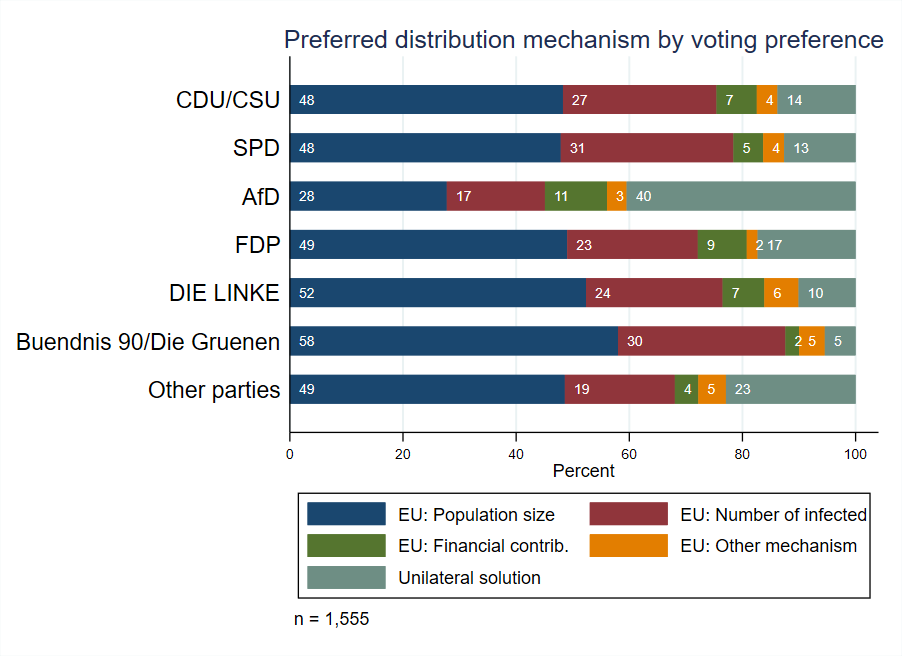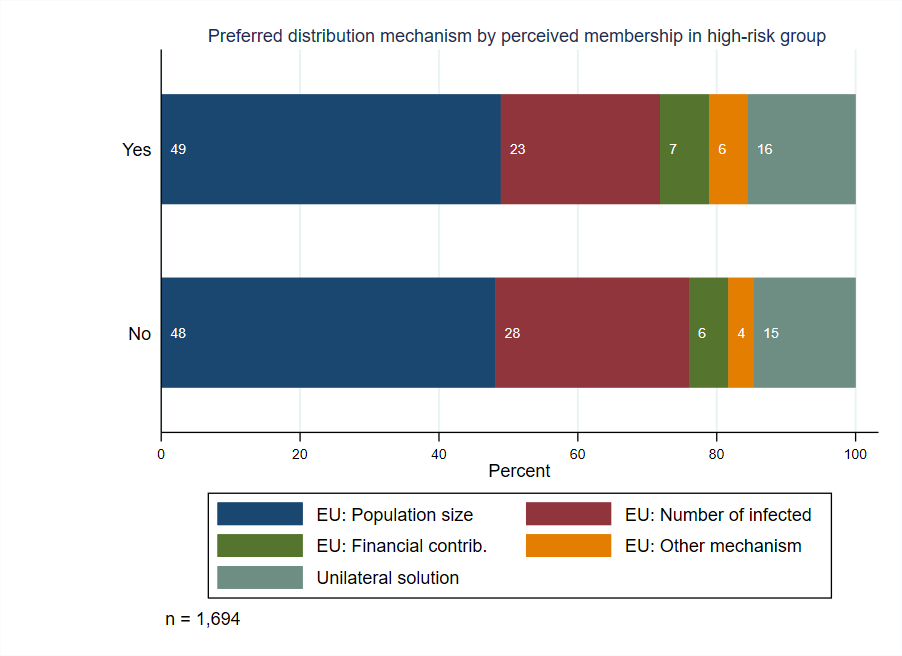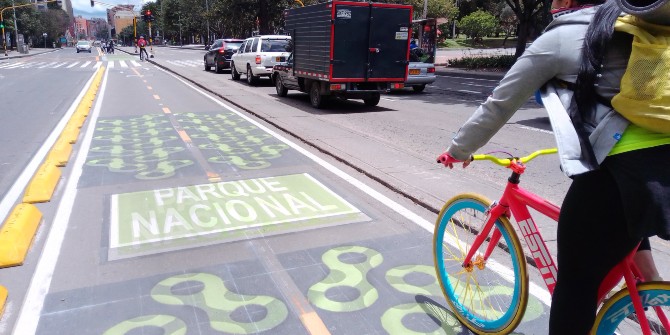Last year the EU made the decision to buy and distribute COVID-19 vaccines centrally, which has since proved controversial. Ann-Kathrin Reinl, Steffen Pötzschke and Alexia Katsanidou (GESIS – Leibniz Institute for the Social Sciences) surveyed public opinion to find out whether Germans initially agreed with the strategy.
The COVID-19 pandemic was not the first crisis to hit the EU, but it has proved one of the most challenging. The EU quickly introduced financial assistance for badly-affected member states, following the example of measures taken during the sovereign debt crisis. A €1074bn budget – the largest in history – took effect in January 2021, and was accompanied by the NextGenerationEU recovery fund of €750bn.
In addition to the monetary bailout for crisis states, another kind of distributive justice came to the forefront of EU solidarity: the joint procurement and distribution of life-saving vaccines. In June 2020, the EU commission presented an EU-wide approach to procure the much-anticipated vaccines. This joint strategy was chosen on the basis of previous experience during the swine flu pandemic. Vaccine doses were jointly pre-ordered from a number of promising vaccine suppliers. As soon as they were approved, these doses would be distributed among member states according to their population size.
Was this collective approach the one EU citizens wanted? If it was, did they agree with the distribution mechanism? An original survey conducted in Germany in November 2020 provides us with some initial insights into the answers to these questions. In our online survey, we asked 2,250 participants about the vaccine distribution mechanism they preferred. Respondents were given five possible scenarios from which to choose their preference. However, it should be noted that the introductory text specified the mechanism the EU had adopted.

The answer categories were:
1. The best way to distribute the vaccine is by taking population size as the starting-point (i.e., the adopted EU policy);
2. Distribution should be based on the number of infections in each country;
3. Distribution should be based on the financial contribution a country has made to the development of the vaccine;
4. Another EU-wide solution would be preferable;
5. An EU-wide distribution mechanism was not a good solution, and countries should secure enough vaccine for their populations independently.
Figure 1 shows the distribution mechanism preferred by our respondents. Nearly half of them supported the solution the EU adopted. Moreover, about three-quarters of the respondents backed mechanisms that are firmly based on intra-EU solidarity (distribution by population size or by number of infections). Another 10 per cent would have favoured other EU-wide solutions that would not necessarily have been rooted in solidarity with fellow EU citizens. Only 16 per cent of the respondents would prefer a unilateral solution, meaning that Germany should have procured vaccines for German citizens instead of agreeing to an EU-wide distribution mechanism. Although this last group only represents a minority of survey respondents, it still means that one in six respondents was in favour of such a national strategy.
Figure 1: Preferred mechanism of vaccine distribution

Let us now look at what different groups of voters thought. As shown in Figure 2, the share of respondents preferring a unilateral solution was highest amongst AfD (Alternative für Deutschland) voters (40 per cent) but even in this group, taken together, 45 per cent favoured the two most “European” solutions. On the other end of the spectrum of preferences, supporters of the Greens (Bündnis90/ Die Grünen) showed the highest support for solidarity-based vaccine procurement at EU level.
Figure 2: Preferred distribution mechanism by voting preference

Figure 3 shows the preferred distribution mechanism according to whether people consider themselves at high risk of a serious case of COVID-19. There was little difference between the two groups.
Figure 3: Preferred distribution mechanism by perceived membership of a high-risk group

This first snapshot gives us some initial insights into public support for vaccine distribution across the EU in November 2020. While the EU’s distribution mechanism received scant attention from the media while vaccines were still in development, by the end of the year criticism had intensified when the EU seemed to be acquiring them more slowly than countries such as Israel and the UK. As a result, there was public criticism of the EU’s distribution mechanism, and national procurement policies may have become more attractive. In order to trace the development of public preferences for vaccine distribution in Germany, we will follow up on this and other questions in two additional panel waves (March and June 2021) of our research project Solidarity in the COVID-19 Crisis (Safe-19). Time will tell whether the German population will prefer an EU-wide vaccine strategy even under changing circumstances such as vaccine shortages and prolonged curfews and lockdowns, or whether a return to national procurement will become more attractive.
The results presented are part of a larger research interest of the collaborative research project Solidarity in the COVID-19 Crisis (Safe-19) funded by the German Federal Ministry of Education and Research (BMBF).
This post represents the views of the authors and not those of the COVID-19 blog, nor LSE.





